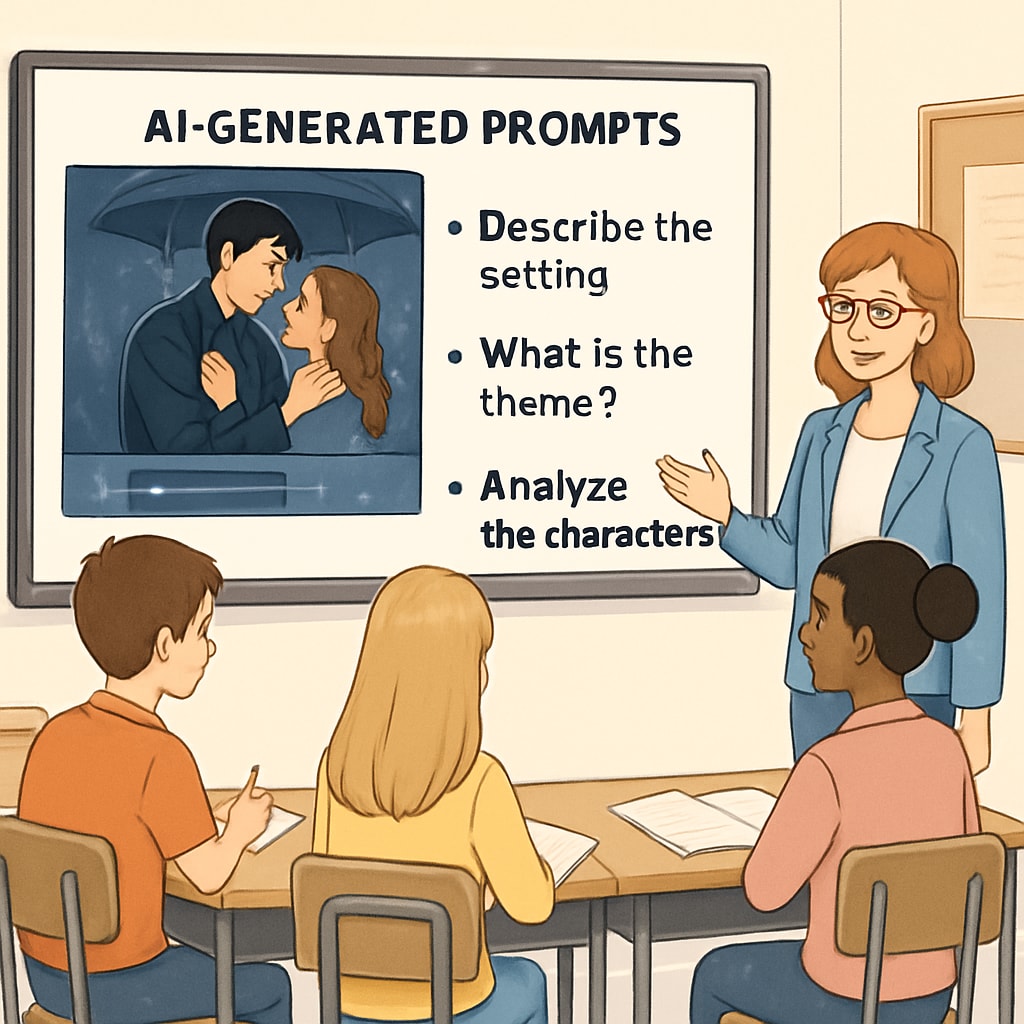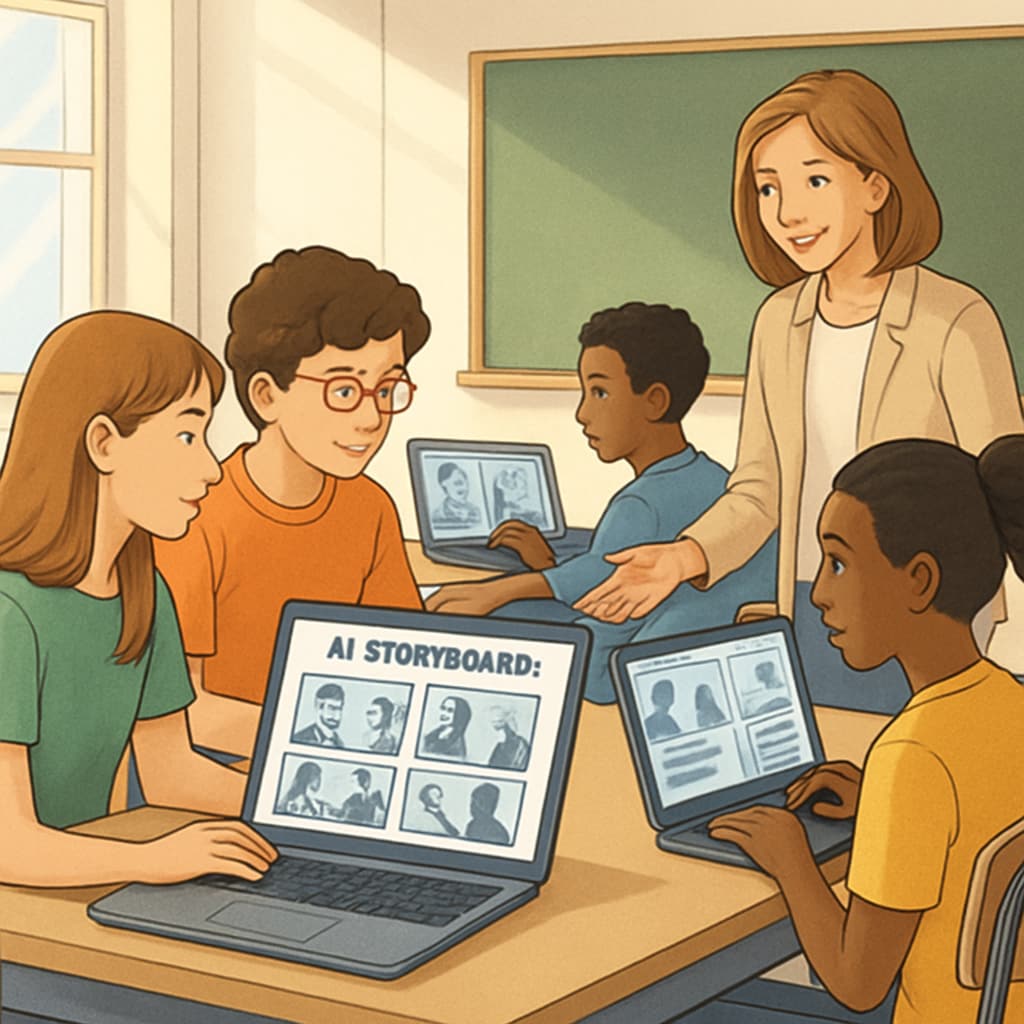In today’s digital age, media literacy is a critical skill for students, especially those in grades 9-12 who are constantly exposed to a flood of information. By using AI writing prompts, media literacy, and educational resources, educators can create innovative learning experiences that enhance students’ abilities to think critically and understand visual storytelling. This article explores five strategies for leveraging AI tools to transform media literacy education.
1. Enhancing Critical Thinking with AI-Driven Writing Prompts
AI writing tools can generate thought-provoking prompts that challenge students to analyze and interpret media content. For example, educators can use AI to create prompts that ask students to dissect the underlying messages in a film or evaluate the effectiveness of a commercial’s visual storytelling. These activities help students develop critical thinking skills by encouraging them to question the intent and impact of various media formats.

2. Supporting Visual Storytelling Skills Through Creative Exercises
AI tools can also support students in developing their visual storytelling abilities. For instance, platforms like Canva or AI-powered storyboard generators can guide students in creating their own short films or advertisements. These tools provide templates, design suggestions, and even feedback, enabling students to focus on honing their narrative techniques and visual communication skills.
In addition, AI-driven platforms like Britannica’s storytelling resources offer structured guidance for crafting compelling visual narratives.

3. Promoting Media Ethics and Responsibility
Media literacy isn’t just about understanding; it’s also about using media responsibly. AI can simulate real-world ethical dilemmas, such as scenarios involving fake news or biased reporting. By engaging with these simulations, students can practice making ethical decisions and understand the consequences of their media interactions. Resources like Media Ethics on Wikipedia offer additional background knowledge to enrich classroom discussions.
4. Encouraging Personalized Learning Paths
AI-powered adaptive learning platforms can tailor media literacy lessons to individual students’ needs. For example, some tools analyze students’ responses to writing prompts and provide personalized feedback to help them improve. This approach ensures that all students, regardless of their starting point, can develop strong media literacy skills at their own pace.
5. Creating Collaborative Learning Environments
AI tools can facilitate collaborative projects, such as group analyses of films or joint creation of multimedia presentations. By using AI platforms, students can share ideas, receive collective feedback, and refine their work in real-time. This collaborative approach not only enhances learning outcomes but also prepares students for teamwork in professional settings.
As a result, incorporating AI into media literacy education fosters a dynamic and engaging classroom environment that equips students with essential 21st-century skills.
In conclusion, leveraging AI writing prompts, media literacy, and educational resources can significantly enhance the way students engage with and understand media. By integrating these tools into structured activities, educators can empower students to think critically, create compelling visual stories, and navigate the digital world responsibly.
Readability guidance: This article uses short paragraphs, includes transition words for coherence, and incorporates lists to summarize key points where applicable. Images are placed strategically to enhance comprehension.


